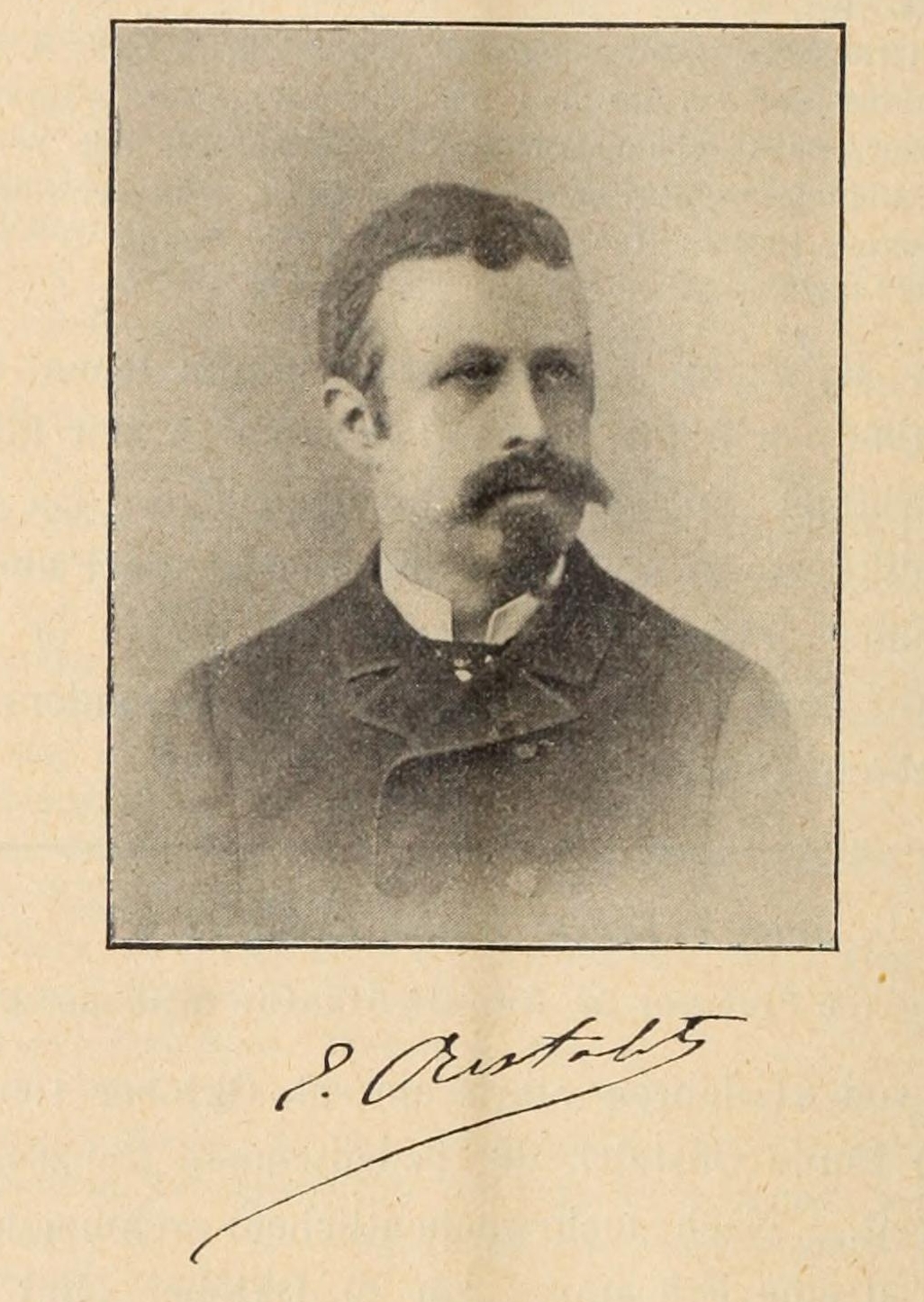|
Félix Biet
Félix Biet, MEP (1838 in Langres, Haute-Marne – 1901 in Saint-Cyr-au-Mont-d'Or) was a French Catholic prelate who served as the Apostolic Vicar of Tibet from 1878 to 1901. He was a member of the Paris Foreign Missions Society and also a naturalist Natural history is a domain of inquiry involving organisms, including animals, fungi, and plants, in their natural environment, leaning more towards observational than experimental methods of study. A person who studies natural history is cal .... Life Biet was born in 1838. He was ordained as a priest in 1864. He was next sent to Tatsienlu in Tibet (called Dartsedo by Tibetans) as a missionary and he became the Bishop of the Apostolic Vicariate of Tibet, Thibet, now Roman Catholic Diocese of Kangding, Diocese of Kangding, in 1898. Félix Biet collected butterflies for Charles Oberthür (entomologist), Charles Oberthür who dedicated three new species (''Thecla bieti'', ''Pantoporia bieti'' and ''Anthocharis bieti'') to him. ... [...More Info...] [...Related Items...] OR: [Wikipedia] [Google] [Baidu] |
Catholic Church
The Catholic Church (), also known as the Roman Catholic Church, is the List of Christian denominations by number of members, largest Christian church, with 1.27 to 1.41 billion baptized Catholics Catholic Church by country, worldwide as of 2025. It is among the world's oldest and largest international institutions and has played a prominent role in the history and development of Western civilization.Gerald O'Collins, O'Collins, p. v (preface). The church consists of 24 Catholic particular churches and liturgical rites#Churches, ''sui iuris'' (autonomous) churches, including the Latin Church and 23 Eastern Catholic Churches, which comprise almost 3,500 dioceses and Eparchy, eparchies List of Catholic dioceses (structured view), around the world, each overseen by one or more Bishops in the Catholic Church, bishops. The pope, who is the bishop of Rome, is the Papal supremacy, chief pastor of the church. The core beliefs of Catholicism are found in the Nicene Creed. The ... [...More Info...] [...Related Items...] OR: [Wikipedia] [Google] [Baidu] |
Charles Oberthür (entomologist)
Charles Oberthür (14 September 1845 – 1 June 1924) was a French amateur entomologist specializing in lepidoptera. Biography Charles Oberthür was born in Rennes, the son of the printer François-Charles Oberthür and Marie Hamelin, and brother of the entomologist René Oberthür. At the age of sixteen he entered the family printing house (which was responsible in particular for printing postal calendars and national lottery tickets) and quickly became a good lithographer. In 1870, he married Louise Le Ray. He is buried in the Cimetière du Nord in a chapel built by his brother-in-law Emmanuel Le Ray, a municipal architect. Politics Oberthür was for some time a member of the municipal council of Rennes. Between 1900 and 1906, he served as first deputy to the mayor, Eugène Pinault. In 1906, he ran as deputy for Ille-et-Vilaine against René Le Hérissé and Mr. Jaouen in the first constituency of the Arrondissement of Rennes. He scored well in the first round (8,151 vot ... [...More Info...] [...Related Items...] OR: [Wikipedia] [Google] [Baidu] |
Qing Dynasty
The Qing dynasty ( ), officially the Great Qing, was a Manchu-led Dynasties of China, imperial dynasty of China and an early modern empire in East Asia. The last imperial dynasty in Chinese history, the Qing dynasty was preceded by the Ming dynasty and succeeded by the Republic of China (1912–1949), Republic of China. At its height of power, the empire stretched from the Sea of Japan in the east to the Pamir Mountains in the west, and from the Mongolian Plateau in the north to the South China Sea in the south. Originally emerging from the Later Jin (1616–1636), Later Jin dynasty founded in 1616 and proclaimed in Shenyang in 1636, the dynasty seized control of the Ming capital Beijing and North China in 1644, traditionally considered the start of the dynasty's rule. The dynasty lasted until the Xinhai Revolution of October 1911 led to the abdication of the last emperor in February 1912. The multi-ethnic Qing dynasty Legacy of the Qing dynasty, assembled the territoria ... [...More Info...] [...Related Items...] OR: [Wikipedia] [Google] [Baidu] |
Émile Oustalet
Jean-Frédéric Émile Oustalet (24 August 1844 – 23 October 1905) was a French zoologist who contributed greatly to ornithology. Oustalet was born at Montbéliard, in the department of Doubs (department), Doubs. He studied at the Ecole des Hautes-Etudes and his first scientific work was on the respiratory organs of dragonfly larvae. He was employed at the Muséum National d'Histoire Naturelle, where he succeeded Jules Verreaux as assistant-naturalist in 1875. In 1900 he succeeded Alphonse Milne-Edwards as Professor of Mammalogy. Oustalet became especially interested in birds after the museum received new specimens from Indo-China and Africa. He took a special interest in the birds of China and co-authored ''Les Oiseaux de la Chine'' (1877) with Armand David, and also wrote ''Les Oiseaux du Cambodge'' (1899). He described a specimen from Ilhéu Branco, Branco as a separate species ''Passer brancoensis'' in 1883, which was recognised as the subspecies ''Passer iagoensis brancoe ... [...More Info...] [...Related Items...] OR: [Wikipedia] [Google] [Baidu] |
Endemic Species
Endemism is the state of a species being found only in a single defined geographic location, such as an island, state, nation, country or other defined zone; organisms that are indigenous to a place are not endemic to it if they are also found elsewhere. For example, the Cape sugarbird is found exclusively in southwestern South Africa and is therefore said to be ''endemic'' to that particular part of the world. An endemic species can also be referred to as an ''endemism'' or, in scientific literature, as an ''endemite''. Similarly, many species found in the Western ghats of India are examples of endemism. Endemism is an important concept in conservation biology for measuring biodiversity in a particular place and evaluating the risk of extinction for species. Endemism is also of interest in evolutionary biology, because it provides clues about how changes in the environment cause species to undergo range shifts (potentially expanding their range into a larger area or becomi ... [...More Info...] [...Related Items...] OR: [Wikipedia] [Google] [Baidu] |
White-speckled Laughingthrush
The white-speckled laughingthrush (''Ianthocincla bieti'') is a species of passerine bird in the family Leiothrichidae. It is endemic to China. Its natural habitat is temperate forests. It is threatened by habitat loss. The white-speckled laughingthrush was at one time placed in the genus ''Garrulax'' but following the publication of a comprehensive molecular phylogenetic study in 2018, it was moved to the resurrected genus ''Ianthocincla''. The specific name commemorates the French missionary to China Félix Biet Félix Biet, MEP (1838 in Langres, Haute-Marne – 1901 in Saint-Cyr-au-Mont-d'Or) was a French Catholic prelate who served as the Apostolic Vicar of Tibet from 1878 to 1901. He was a member of the Paris Foreign Missions Society and also a natur .... References {{Taxonbar, from=Q798930 white-speckled laughingthrush Birds of Central China Birds of Yunnan Endemic birds of China white-speckled laughingthrush Taxonomy articles created by Polbot Taxobox binomia ... [...More Info...] [...Related Items...] OR: [Wikipedia] [Google] [Baidu] |
Jean-André Soulié
Jean-André is a French masculine given name. It may refer to: * Jean-André Cuoq (1821–1898), French philologist * Jean-André Deluc (1727–1817), Swiss geologist and meteorologist * Jean-André Mongez (1750–1788), French priest and mineralogist * Jean-André Rixens (1846–1925), French painter See also * Jean (male given name) In many French-speaking countries, Jean is a male name derived from the Old French ''Jehan'' (or Jahan). The -4; we might wonder whether there's a point at which it's appropriate to talk of the beginnings of French, that is, when it wa ... ''Jeha ... * André {{given name French masculine given names Masculine given names Compound given names ... [...More Info...] [...Related Items...] OR: [Wikipedia] [Google] [Baidu] |
Rhinopithecus Bieti
The black-and-white snub-nosed monkey (''Rhinopithecus bieti''), also known as the Yunnan snub-nosed monkey, is a large black and white primate that lives only in the southern Chinese province of Yunnan, where it is known to the locals as the Yunnan golden hair monkey () and the black-and-white snub-nosed monkey (). The common name, black snub-nosed monkey, is issued to '' Rhinopithecus strykeri'', inhabiting the Northern Sino-Myanmar border. Coniferous and deciduous forests in the mountainous regions of Yunnan are the ideal terrain for these primates. It is threatened by habitat loss, and is considered an endangered species. With their unique adaptations to their environment, these monkeys thrive at extreme altitudes despite the below freezing temperatures and thin air. This primate's diet is mainly made up of the large amounts of lichens available in their region. Anatomy and physiology Male and female black-and-white snub-nosed monkeys have no colorization differences, but d ... [...More Info...] [...Related Items...] OR: [Wikipedia] [Google] [Baidu] |
Felis Bieti
The Chinese mountain cat (''Felis bieti''), also known as Chinese desert cat and Chinese steppe cat, is a small wild ''Felis'' species with sand-coloured fur, faint dark stripes on the face and legs and black tipped ears. It is endemic to the Tibetan Plateau of western China, where it lives in grassland above elevations of . It has been listed as vulnerable on the IUCN Red List since 2002. Taxonomy and phylogeny The scientific name ''Felis bieti'' was proposed by Alphonse Milne-Edwards in 1892 who described the Chinese mountain cat based on a skin collected in Sichuan Province. He named it ''Felis Bieti'' in honour of the French missionary Félix Biet. In 2007, it was provisionally classified as a wildcat subspecies under the name ''F. silvestris bieti''. It has been recognised as a valid species since 2017, as it is morphologically distinct from wildcats. The Chinese mountain cat belongs to an evolutionary ''Felis'' lineage that is estimated to have had a common ancestor ... [...More Info...] [...Related Items...] OR: [Wikipedia] [Google] [Baidu] |
Chinese Mountain Cat
The Chinese mountain cat (''Felis bieti''), also known as Chinese desert cat and Chinese steppe cat, is a small wild '' Felis'' species with sand-coloured fur, faint dark stripes on the face and legs and black tipped ears. It is endemic to the Tibetan Plateau of western China, where it lives in grassland above elevations of . It has been listed as vulnerable on the IUCN Red List since 2002. Taxonomy and phylogeny The scientific name ''Felis bieti'' was proposed by Alphonse Milne-Edwards in 1892 who described the Chinese mountain cat based on a skin collected in Sichuan Province. He named it ''Felis Bieti'' in honour of the French missionary Félix Biet. In 2007, it was provisionally classified as a wildcat subspecies under the name ''F. silvestris bieti''. It has been recognised as a valid species since 2017, as it is morphologically distinct from wildcats. The Chinese mountain cat belongs to an evolutionary ''Felis'' lineage that is estimated to have had a common ancest ... [...More Info...] [...Related Items...] OR: [Wikipedia] [Google] [Baidu] |
Alphonse Milne-Edwards
Alphonse Milne-Edwards (Paris, 13 October 1835 – Paris, 21 April 1900) was a French mammalogist, ornithologist, and carcinologist. He was English in origin, the son of Henri Milne-Edwards and grandson of Bryan Edwards, a Jamaican planter who settled at Bruges (then in France). Milne-Edwards obtained a medical degree in 1859 and became assistant to his father at the ' in 1876. He became the director of the in 1891, devoting himself especially to fossil birds and deep-sea exploration. In 1881, he undertook a survey of the Gulf of Gascony with Léopold de Folin and worked aboard the ''Travailleur'' and the '' Talisman,'' researching the seas off the Canary Islands, the Cape Verde Islands, and the Azores. For this, he received a gold medal of the Royal Geographical Society. His major ornithological works include ' published in two parts in 1867 and 1872, ' 1866–1874 and ' 1868–1874. His study of fossils led to the discovery of tropical birds such as trogons and parrots ... [...More Info...] [...Related Items...] OR: [Wikipedia] [Google] [Baidu] |


